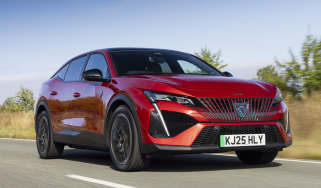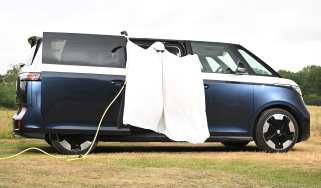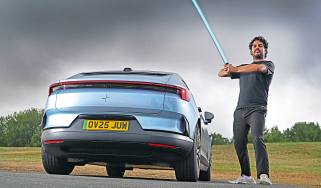Polestar 4 review
Polestar is treading its own path in the EV world, and the Polestar 4 is a perfect example of this

Our opinion on the Polestar 4
The cutting-edge Polestar 4 likes to do things a little differently and is sure to attract buyers who want to make a statement. The lack of a rear window will always be a talking point, but it’s just that, really, and doesn’t detract from the day-to-day driving experience or sophisticated interior. That said, some of the technology onboard can feel overwhelming at times, and while the car has a sporty edge, it isn’t engaging to drive.
| Key specs | |
| Fuel type | Electric |
| Body style | Coupé-SUV |
| Powertrain | 94kWh battery, 1x e-motor, rear-wheel drive 94kWh battery, 2x e-motor, all-wheel drive |
| Safety | Five stars (Euro NCAP, 2025) |
| Warranty | Three years/60,000 miles |
About the Polestar 4
Unintentionally or not, the Polestar 4 has done a fantastic job of raising the profile of what was already a much-discussed and rapidly growing brand. Before a single example had hit the streets, so much had already been said about ‘the car with no rear window’, but there is much more to this car than that.
The fourth model to emerge from the all-electric spin-off of Volvo, the Polestar 4 is a premium electric coupé-SUV, with the Audi Q6 e-tron and Porsche Macan Electric being its most direct rivals. However, we expect potential buyers may also consider everything from low-slung saloons, such as the Audi A6 e-tron, to practical mid-size SUVs, such as the Tesla Model Y.
The Polestar 4 starts from around £60,000, which is a few thousand pounds less than either the A6 or Q6 e-tron models, and nearly £9k less than that of the Macan EV. There’s no endlessly multiplying model range or sprawling options lists like you get with Porsche, either; Polestar gives its customers a much more streamlined selection of a single or dual-motor powertrain, both using the same capacity battery, a handful of paint colours and interior themes, plus some option packs and accessories.
We expect most buyers will opt for the entry-level Polestar 4. It features a 268bhp rear-mounted e-motor and a 100kWh (94kWh usable) capacity battery that offers a huge range of up to 385 miles. The 536bhp all-wheel-drive model, which will supposedly do 367 miles on one charge, but does cut the car’s 0-62mph time down from 7.1 seconds to just 3.8.
There are six paint finishes to choose from. Silver ‘Magnesium’ is the only no-cost option, with the others ranging from £1,000 to £1,400. Similarly, a charcoal colour interior is standard, or buyers can add a lighter zinc colour scheme and technical knit upholstery for £900, or upgrade to black or zinc Nappa leather with front seat ventilation, massaging function, and integrated Harman Kardon headrest speakers for £3,300.
Beyond this, there are five equipment packs available. The first is the Plus Pack which is currently fitted on all cars and includes an excellent Harman Kardon sound system, pixel LED headlights, a three-zone climate control system, a head-up display and a powered tailgate.
The Pilot Pack costs around £1,300 and adds some autonomous safety features such as lane centring and lane change assistance, while the £1,800 Pro Pack comes with 21-inch wheels and gold-coloured seatbelts. Alternatively, the Prime Pack for £1,000 combines the Plus and Pilot pack, and throws in rear privacy glass as well.
Finally, the £4,000 Performance Pack features chassis tweaks to sharpen the driving experience, but can only be added to dual-motor models.
If you're interested in purchasing a Polestar 4, we can assist you. Configure your ideal Polestar 4 now to get top offers from local dealers, check out the latest Polestar 4 leasing deals or search for used Polestar 4 models with our Find A Car service. You can even sell your existing car for a great price with Auto Express Sell My Car.
Electric motors, performance & drive
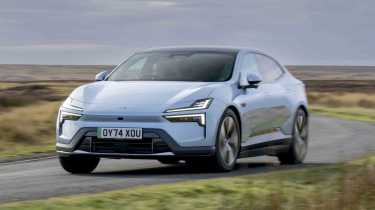
Pros |
Cons |
|
|
The Polestar 4 uses the SEA (Sustainable Experience Architecture) platform from parent company Geely, variants of which have been used for electric cars of all shapes and sizes, from the Zeekr X hatchback and Smart #1 compact SUV to the Volvo EM90 luxury MPV and Lotus Emeya four-door GT.
During our testing, we found the ride on the firm side, but this does help to give the Polestar 4 a sporty edge that suits its silhouette, and body control is kept in check. It’ll still absorb the worst impacts from potholes and other imperfections that litter UK roads, though.
Something else you’ll quickly notice behind the wheel of the Polestar 4 is that the driving position is spot on and so are the seats, providing ample support and comfort, plus lots of adjustability. The real elephant in the room is, of course, the lack of a rear window, but you actually quickly forget the car relies on a 8.9-inch digital rear view mirror once behind the wheel, and you can adjust the display’s brightness and view to make it look as natural as possible.
Another curious detail is that there are no traditional drive modes. Instead, the driver can individually tailor the setting for the steering feel, power delivery and regenerative braking, plus the suspension tuning if the Polestar 4 is equipped with adaptive dampers from the Performance Pack.
There are three strength levels for the brake regen/one-pedal driving system: Off, Low and Standard. The strongest setting brings the car to a halt at a predictable pace, and delivers a good amount of stopping force when you lift off the throttle. Turn off the Creep mode, and it will ensure the car comes to a complete stop. Meanwhile, the Low setting provides about the same amount of deceleration as traditional engine braking.
Performance, 0-60mph acceleration and top speed
The Polestar 4 in single-motor form will go from 0-62mph in a sprightly 7.1 seconds, while the dual-motor version’s extra power and traction allow it to complete the same sprint in 3.8 seconds. Both cars top out at 124mph, however.
The single motor’s 268bhp and 343Nm of torque are close to half the power of the supercar-quick, dual-motor version, but that’s still more than enough for everyday driving, and we like the smooth ramp-up in delivery. In Range mode, there is a slight delay in power delivery from your throttle pedal inputs, but it’s more responsive if you switch into Performance mode.
Those looking for more straight-line impact will need the Polestar 4 dual motor, which ups power to a supercar-like 536bhp with a meaty 686Nm of torque. It feels more responsive, too – although not to the point where you can confidently adjust power mid-corner. Both versions feel pretty similar in terms of the feel you get back from the driven wheels; the car doesn’t seem obviously rear-driven in single-motor form, or all-wheel drive in dual-motor guise. Plus there’s precious little lift from the nose once you’ve planted your right foot.
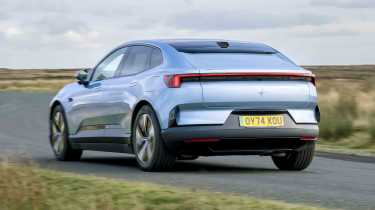
Town driving, visibility and parking
The ride in the Polestar 4 feels smoothest at low speeds around town, and as previously mentioned, this car delivers proper one-pedal driving capability, which is great for stop-start traffic. Plus it’s easy to toggle on/off with the programmable shortcut buttons on the steering wheel, with the other one handily set up to deactivate the speed limit warning on the examples we drove.
The two cowls on the bonnet also make it easy to place the car on the road, and visibility is better than you’d expect of a rakish coupé-SUV, let alone one without a back window. The sharp rear view and surround view camera system helps in tight car parks, too, especially as the turning circle isn’t great. There’s also a lighter steering mode, if you feel you need it for low-speed manoeuvres.
B-road driving and handling
Find the right twisty road and switch the stability control into Sport mode, and you’ll feel the rear of the car pushing around tighter corners. The steering is well weighted out of the box, too, although the front end isn’t rapid to respond to inputs, so smooth actions are required so as not to unsettle the car’s mass. Ultimately, while the Polestar 4 has a playful side, it’s not as exciting or engaging to drive as the Porsche Macan Electric it competes against.
We have tried a Polestar 4 equipped with the Performance Pack, which adds adaptive suspension, plus larger discs and calipers made by Brembo that are definitely worth highlighting. They offer tremendous stopping power, yet don’t feel too grabby, despite having not much pedal travel before they kick in.
Polestar has decided not to pipe fake engine noises or any kind of synthesised soundtrack into the cabin, which some may consider a novelty, but does help to create a more engaging driving experience, as proven by the thrilling Hyundai Ioniq 5 N, while the Porsche Macan Electric features such a system too.
Motorway driving and long-distance comfort
While there is a pleasing wafting quality to the ride, we found the car never quite settles down at higher speeds. There’s some wind noise from the side mirrors on the motorway, too, but road noise isn’t excessive. Overall, the Polestar 4 is a competent motorway cruiser, but not exceptional.
“While I’m under no impression that the Polestar 4 is a performance car, I have already enjoyed the sheer ease with which it can deploy its vast reserves of power. It seems Polestar has ambitions to make a car that can do it all with the 4.” – Jordan Katsianis, senior staff writer
| Model | Power | 0-62mph | Top speed |
| Polestar 4 Long range Single motor | 268bhp | 7.1 secs | 124mph |
| Polestar 4 Long range Dual motor | 536bhp | 3.7 secs | 124mph |
Range, charging & running costs
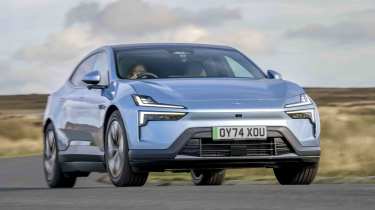
Pros |
Cons |
|
|
Electric range, battery life and charge time
Range figures are impressive for both the single and dual-motor Polestar 4, thanks to a very large 94kWh battery and a rather sleek drag coefficient of 0.26Cd. Officially, the standard rear-drive model can cover up to 385 miles before the battery is out of juice.
Meanwhile the extra weight and power of the all-wheel-drive variants means it tops out at a still impressive 367 miles – more than you get from the sporty Audi SQ6 e-tron, with its 358-mile range. The dual-motor model also features a system for decoupling the front motor so it can run in rear-drive during cruising, to promote efficiency.
Unfortunately, we haven’t spent long enough in the Long Range Single Motor Polestar 4 to see how efficient it is in daily life, although during our testing, we saw a predicted range of 369 miles. Our long term Long Range Dual Motor Polestar 4 is averaging around 3.5 miles per kilowatt hour, or 329 miles based on the usable capacity of the battery. On longer motorway trips, the efficiency dips a little to 3.3 miles per kilowatt hour, or 310 miles of range – although that’s to be expected given there are fewer opportunities to put any electricity back into the battery through regenerative braking when driving at a constant speed.
The maximum charging speed stands at 200kW for both models, allowing the 100kW (94kWh usable) battery to be replenished from 10-80% state of charge in 30 minutes. That’s not quite as quick as the Porsche Macan Electric, which takes 21 minutes to do the same charge at a rate of 270kW.
Quicker 22kW AC charging is offered as part of the plus pack and allows for a 0-100% recharge in five-and-a-half hours at that speed. However, most homes aren’t set up with a three-phase electricity supply capable of supplying 22kWs of power, so a more common 7.4kWh wallbox charger will take 17.5 hours to recharge a Polestar 4 fully.
| Model | Battery size | Range | Insurance group |
| Polestar 4 Long range Single motor | 94kWh | 385 miles | 45 |
| Polestar 4 Long range Dual motor | 94kWh | 367 miles | 48 |
Insurance groups
The Polestar 4 falls into insurance group 45 (out of 50), if you get the single-motor powertrain, while the much more powerful dual-motor versions attract an insurance rating of group 48. By way of comparison, the Porsche Macan Electric falls into insurance groups 45 to 50, depending on the exact model.
Tax
From April 1 2025, electric cars will be subject to the same vehicle excise duty (VED) road tax charge as petrol and diesel cars. The first year charge is only £10, and from the second tax year onwards, it’s £195. Unfortunately, it’ll also be subject to the luxury car tax surcharge because every version of the Polestar 4 costs over £40,000 when new. The additional charge applies annually from the second time the vehicle is taxed for a total of five years.
Meanwhile for company car drivers, the Benefit-in-Kind (BiK) rate for electric cars like the Polestar 4 is currently just three per cent for the 2025/26 tax year.
Depreciation
According to our latest expert data, the Polestar 4 should hold onto around 52% of its original value after three years or 36,000 miles of ownership. That’s pretty good, just a little behind the Porsche Macan Electric, which is predicted to retain 57-59% of its value over the same period. It’s close to the Audi A6 e-tron range, which should hold onto 50-56%.
To get an accurate valuation of a specific model, check out our free car valuation tool...
Interior, design & technology
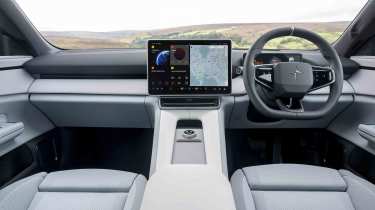
Pros |
Cons |
|
|
There’s a familiar face to Polestar’s expanding range of cars, all influenced by the Precept concept from 2020. The purposeful front end with its ultra-slim headlights, all-round smooth surfacing, contrasting lower-body panels and a full-width rear light bar are becoming Polestar design traits – along with a higher-riding side profile that helps hide the positioning of the battery within the wheelbase.
Look closer at the Polestar 4 and you’ll notice the technology on full display, with many of the 12 exterior cameras clearly visible. Plus flush-fitting door handles, aerodynamically-optimised wheels, and a shallow windscreen rake help make the car as slippery as possible through the air, which in turn allows for its impressive range figures.
At the rear you’ll immediately notice there’s no window. It’s a bold move by Polestar and one that could potentially put off some prospective buyers looking for a more traditional driving experience.
The theory behind this is that the rear window is made irrelevant by the standard-fit digital rear-view mirror. It’s an 8.9-inch display, with a nice, clear resolution, despite the rear camera only having 2.5 megapixels. In our test cars, the image moved left and right when indicating, although we didn’t like how the image suddenly jumped rather than gradually panned – we’ve been assured that customer cars will have the option to turn this feature off.
That’s fine, because the 121-degree field of view is great anyway. You can also switch the camera feed off so it becomes a standard mirror for you to check up on rear-seat occupants.
Interior and dashboard design
The lack of a rear window may have attracted a lot of debate, but the Polestar 4’s real star attraction is the interior. The dashboard looks and feels as if it’s been designed by Nike, because it ditches the traditional cowhide and piano black plastics in favour of brushed metals and more sustainable materials, inspired by the world of fashion.
The front seats are comfortable, supportive and offer lots of adjustment to find the ideal driving position. And it might sound a little cheesy, but something that works well is the ambient lighting, which has themes based on our solar system, with specific colours for the sun, moons and planets.
Materials and build quality
The materials feel upmarket throughout the front of the cabin, and all the key touchpoints, such as the steering column stalks, are weighty and feel solid. The model you see in the pictures has the optional zinc interior theme and Mist Tailored Knit upholstery, which we think is well worth the extra £900 and gives the interior the ambience of a starship.

Sat-nav, stereo and infotainment
Every Polestar 4 features a super-sharp 10.2-inch driver’s display and a massive 15.4-inch infotainment touchscreen on the dash, rather than the portrait screen in the Polestar 3. The onboard Google-based software prioritises driver customisation, with the ability to select which widgets go on the homepage and adjust a vast number of settings for the car.
Pages and sat-nav routes load quickly, and everything is laid out very clearly and is intuitive to use, like a smartphone (something Google knows a lot about). Our only complaint is just how many functions are buried within various menus and sub-menus, which can make adjusting even some basic settings a distraction if you’re not sure where to look.
And with precious few physical buttons, most of the car’s functions are operated on the screen. The steering wheel does come with physical control pads, although the arrows on the side are lit up as they work for a variety of different menus – a strange decision, but one that doesn’t affect the Polestar 4’s usability all that much.
The driver’s display provides all the basic information you require, and is customisable too, so it can show safety systems in action or a full-screen map. We like the head-up display that comes as part of the Plus pack, because it’s not too intrusive and has clear graphics. It even has a snow mode to improve visibility in certain extreme weather conditions.
“By law, you have to have a physical button to switch on the hazard warning lights, and that can be found up on the ceiling near the rear-view mirror - just like on a Tesla. But because that isn’t an obvious place for it and can be difficult to find, there’s also a shortcut for it on the central touchscreen, too.” – Max Adams, online reviews editor
Boot space, comfort & practicality

Pros |
Cons |
|
|
The benefit of the Polestar 4’s headline-grabbing rear end design, with no window, is an impressive amount of headroom for rear passengers – and not just in comparison with other rakish coupé-SUVs.
There are some storage compartments dotted around the cabin, which are all average in size, plus a large area underneath the floating centre console. The rear armrest doesn’t incorporate the pop-out tablet and smartphone holders you get in the Polestar 3, just a pair of pop-out cupholders and the controls for electric reclining rear seats (part of the Plus Pack).
Dimensions and size
Although it sits below the Polestar 3 in the firm’s line-up and is not as long from nose to tail, the Polestar 4 has a longer wheelbase than its sibling, which provides an impressive amount of interior space. It’s wider than its sibling, too, and sits lower to the ground for a more athletic look, along with the sloping roofline.
| Dimensions | |
|---|---|
| Length | 4,840mm |
| Width | 2,008mm (2,139mm inc mirrors) |
| Height | 1,534mm |
| Number of seats | Five |
| Boot space | 526-1,536 litres |
Driving position, seats & space in the front
The seats, which are superbly comfortable, are heated in the front and electrically operated. In addition to the Plus Pack that’s currently standard-fit on every Polestar 4, you can upgrade to perforated Bridge of Weir Nappa leather upholstery, which adds a massage function and headrest speakers to go with the excellent Harman Kardon sound system. The tall floating centre console makes the driver feel cocooned but not hemmed in, although it’s not particularly easy to access the storage underneath when you’re sitting in the car.

Seats & space in the back
The lack of a rear window means the designers have been able to maximise rear headroom, while retaining the sleek exterior look. We’re pleased to report there’s more than enough for six-foot-tall adults, plus even more legroom available, although there’s no space under the front seats for rear passengers’ feet. The side windows also extend further back than normal, and a panoramic glass roof is fitted as standard, so passengers shouldn’t feel claustrophobic sitting in the back.
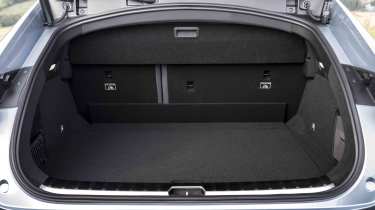
Boot space
In terms of luggage capacity, the Polestar 4 isn’t on the same level as some traditional boxy SUVs, but still gets a sizable 526-litre boot – exactly the same as the Audi Q6 e-tron’s, and very nearly as big as the Porsche Macan’s. Plus, it comes with a height-adjustable boot floor, and underneath is a handy 31-litre storage compartment – ideal for the charging cables.
The rear seats fold flat in a 60/40 split, which isn’t as flexible as the 40/20/40 split of the Macan Electric. Dropping the rear seats increases the luggage capacity of the Polestar 4 to 1,536 litres, although the sloping rear portion of the body could make it a little awkward to load large objects. There is also a relatively small 15-litre storage area in the nose, which isn’t nearly as useful as the Tesla Model Y’s 117-litre frunk.
Towing
The Polestar 4 has a commendable towing capacity of 2,000kg if you get the dual-motor version, or 1,500kg for the single-motor.
The former beats the similarly four-wheel drive version of the Tesla Model Y (1,600kg), and matches the Macan Electric.
“Much like the Volvo EX90, the Polestar 4 has frameless side mirrors that you cannot clamp traditional extended towing mirrors to.” – Max Adams, online reviews editor
Reliability & safety
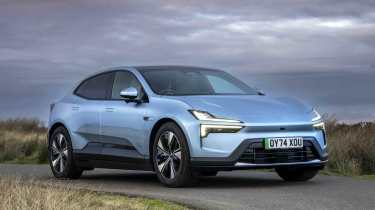
Pros |
Cons |
|
|
Polestar achieved an impressive second-place finish in our 2023 Driver Power survey best car manufacturer rankings, which is based on feedback we receive from the Driver Power owner satisfaction survey. However, the brand didn’t make an appearance in either the 2024 or 2025 lists, so it’s hard to say how it’ll perform. Polestar’s parent brand, Volvo, did make an appearance in 13th out of 31 brands, which is slightly up on its 2024 result of 16th out of 32 manufacturers.
Along with 12 exterior sensors, there are 12 cameras and a front radar on the Polestar 4, all helping to provide systems such as autonomous emergency braking, lane keep assist, adaptive cruise, driver alert and post-impact braking with as much information as possible. All these safety systems are featured as standard in the Polestar 4, plus there are seven airbags and even an interior radar to help prevent children and animals from being accidentally left inside.
That extensive list of safety equipment explains the excellent five-star Euro NCAP crash test safety rating of the Polestar 4. It achieved higher scores in the adult occupant and safety assistance categories than the Porsche Macan Electric, while the Audi Q6 e-tron edged ahead in the child occupant and safety assist categories.
| Key standard safety features | Euro NCAP safety ratings |
|
|
Buying and owning
Best buy: Polestar 4 Long Range Single Motor (Prime Pack)
Unless you are pulling a caravan or trailer and need the extra towing capacity, the Single Motor version is the pick of the range. It goes further on a charge than other Polestar 4 models, and it’s still quick enough for most needs. We’d advise you to go for the Prime Pack because it only costs a £1,000, but includes the Plus and Pilot packs, along with rear privacy glass (the latter two options add up to £1,550). You may also want to add the £900 Mist Tailored knit with zinc deco interior because the brighter interior shade seems even more inviting than the charcoal interior.
The Polestar 4's warranty is an industry-standard three years or 60,000 miles. The battery has a separate warranty of eight years or 100,000 miles, whichever comes first. If the battery’s state of health drops below 70 per cent during the first eight years, it will be replaced at no cost.
The Polestar 4 comes with free, scheduled maintenance for the first three years or 31,250 miles, whichever comes first. The service schedule for the Polestar 2 (we expect the same for the Polestar 4 after the first three years) is every two years or 20,000 miles. There are currently 93 Polestar service points in the UK.
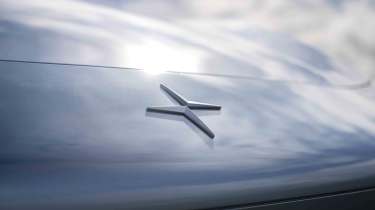
Polestar 4 alternatives
There are a lot of mid-size electric SUVs around these days, even at the premium end of the market where the Polestar 4 competes, so buyers have plenty of choice. Even in this crowded setting, however, the Polestar 4 manages to stand out, and it will deservedly appeal to style-conscious buyers looking for something a little out of the ordinary.
It’s a very workable family car, one that justifies its premium positioning with a quality feel, solid build and futuristic design. There are more practical options, like the Tesla Model Y, which is cheaper too. Other models, such as the Porsche Macan Electric, cost more but are ultimately more enjoyable to drive, while the Audi Q6 e-tron offers more traditional looks, but can’t match the range of the entry-level Polestar 4.
The main appeal of the Polestar lies in its style and the way it embraces modern technology, even if some tech features are more successful than others.
Deals on the Polestar 4 and alternatives
Polestar 4 Dual Motor long-term test
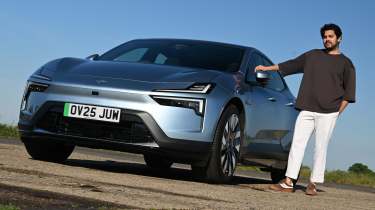
Our Senior news reporter, Jordan Katsianis, is running a Polestar 4 Dual Motor Long Range as part of a six-month test, and has so far been enjoying the prodigious performance of the most powerful model in the 4’s range.
Its vast exterior dimensions are perhaps not ideal for parking in tight London streets, but at least this does translate into plenty of interior space when chauffeuring friends around. Read more about our long-term Polestar 4 here...
Frequently Asked Questions
The entry-level Polestar 4 Long Range Single Motor delivers plenty of power, goes the furthest on a charge, is overflowing with technology and feels premium. However, we recommend adding the Mist Tailored Knit interior, which makes the cabin even more special for only £900 extra.

